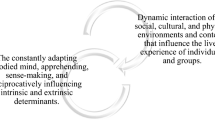Abstract:
In the light of the developing discourse on the relative merits of ‘hard’ and ‘soft’ approaches to information systems development, we present a case study application of a methodology which attempts to dissolve such dualities. Personal Construct Psychology (PCP) offers, as a unity, the construing person who is both biology and culture. PCP argues that both the world and the person’s construct system are phenomenologically real and that the viability of any particular construct system depends only on its usefulness to the construing person. In this study, we used PCP to explore the organisational context of information use and distribution in a large hospital. We used repertory grids, a PCP technique, to elicit from 16 members of staff their personal construals of information from different sources in the hospital. The results highlight the relationship between meaningful information and meaningfully active relationships, a theme which we discuss in terms of the development of the hospital information system and in terms of the value of PCP in dissolving hard–soft dichotomies.
Similar content being viewed by others
Explore related subjects
Discover the latest articles, news and stories from top researchers in related subjects.Author information
Authors and Affiliations
Rights and permissions
About this article
Cite this article
McCarthy, J., O’Connor, B. The Context of Information Use in a Hospital as Simultaneous Similarity–Difference Relations. Cognition, Technology & Work 1, 25–36 (1999). https://doi.org/10.1007/s101110050008
Issue Date:
DOI: https://doi.org/10.1007/s101110050008




